The emphasis in survey courses is on "coverage"—trying to get through vast quantities of material. This can create routines which, according to Lendol Calder, rarely lead students to develop skills as historical readers, writers, and thinkers. As one of the study participants put it, in history survey courses you listen to a lecture, then you read a textbook, then you take a test. And then you do it all over again. Many teachers, however, acknowledge that covering everything is an impossible goal. But if "coverage" is not the aim of survey courses, then what is?
In this article from the Journal of American History, Calder argues for a new way of teaching these courses. Too often, history survey courses focus only on "what happened," without stopping to consider the work that historians do or to inquire into the writing and reading of history. Calder argues that "uncoverage" (a term used by Grant Wiggins and Jay McTighe to describe a way to delve into content instead of just covering it) is naturally suited to history, which is about inquiry, argument, and point of view, and often uses incomplete evidence to construct reasonable stories about the past. Calder claims that plowing through piles of historical facts actually prevents students from connecting with the disciplinary work of history. By emulating the work of historians, students actually retain content better, because they are more engaged in the process of learning and absorbing information.
. . . plowing through piles of historical facts actually prevents students from connecting with the disciplinary work of history.
Although the article focuses on college-level courses, the uncoverage concept could apply just as well to middle- and high-school classes, which are almost always taught as survey courses.
Framing the Course
Calder begins by asking students to consider reasons for studying history, the problems that arise in the pursuit of historical knowledge, and the stories and patterns from the past. After explaining the nature of "doing history," Calder explains that the class will be focusing on particular "problem areas" from the American past such as "Origins of the Cold War" and "1980s Culture Wars." For each problem area, Calder identifies six historical skills students can develop: questioning, connecting, sourcing, making inferences, considering alternate perspectives, and recognizing limits to one’s knowledge. At the heart of his approach are three modes of inquiry that students should learn to employ: the visual, the critical, and the moral.
. . . three modes of inquiry that students should learn to employ: the visual, the critical, and the moral.
Visual Inquiry
Calder tackles each problem area with a visual inquiry into the period. Through films that focus on historical topics and create an environment rich in information, students can become engaged and begin to ask historical questions. This approach "uncovers" the way historians choose topics to focus on, based on what they find interesting or have questions about.
Critical Inquiry
Next, Calder has his students engage in critically examining the problem area. In a structured history workshop, students examine primary documents and construct interpretations about the period. During this phase, Calder emphasizes questioning what doesn’t make sense, drawing connections to prior knowledge, making inferences, and considering alternate perspectives.
Moral Inquiry
Finally, Calder leads his students into what he calls "a moral inquiry" of the problem area. By this time students are primed to begin reading opinionated secondary sources that seem to "pick a side" in the history they tell. Particularly useful are provocative texts that prompt students to consider how they would think or write about interpretations of the past.

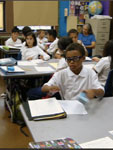
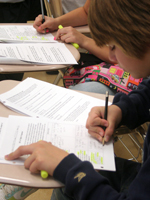


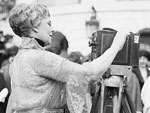
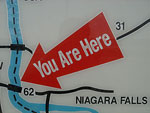
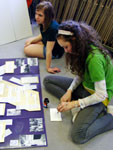
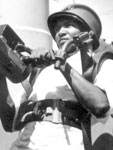
 If none of these resources fit into your curriculum or spark your interests, there's plenty where they came from. Search our
If none of these resources fit into your curriculum or spark your interests, there's plenty where they came from. Search our